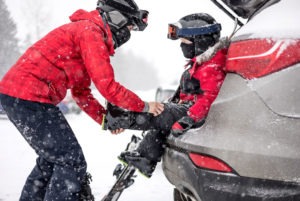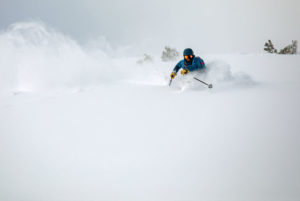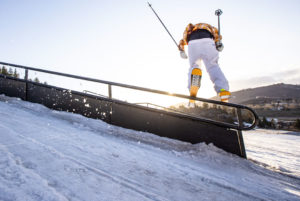If you’re looking for a fun, exhilarating way to spend time outdoors, then cross country skiing may be for you! But of course, as with any activity, there’s more to it than merely a desire to try it out.
Cross country skiing may appear daunting for a beginner. But if you catch yourself struggling and having issues overcoming the learning curve, then you’ve come to the right place!
In this feature, we are going to discuss just exactly what cross-country skiing is, how it differs from traditional skiing, as well as 5 helpful tips to encourage any novice cross-country skier!
Let’s get right into it!
What Is Cross-Country Skiing?
Before we deep-dive into the ins and out of the sport, it helps to know what differentiates cross-country skiing from traditional skiing.
Traditional skiing, or downhill skiing, works exactly how it sounds. This type of skiing is performed on mountains or ski hills and resorts. As the descent aids in motion, downhill skiing tends to be less physically demanding but perhaps more difficult. Cross-country skiing involves ascents, descents, and flat terrain, and you must rely on your own locomotion to maintain power.
With all that out of the way, let’s proceed with five cross-country ski tips for beginners!
- Know Your Equipment
One of the most important things to remember before embarking on any skiing outing is that you should always have the right type of equipment. Not only will it help bring out the most of your cross-country skiing experience, but it will also keep you warm, protect from falls and scrapes, and shelter you from the elements.
But what exactly is the right sort of equipment?
Let’s break down the most essential pieces:
Cross-Country Specific Ski – these skis are generally longer, skinnier, and more lightweight compared to downhill models. These skis come in several variations. Some waxable models require you to apply a temperature-specific, sticky kick wax to a section of the base, while there are also some waxless variants with a fishscale-like pattern that generates kick.
XC Boots – cross country ski boots should be relatively lightweight, warm, comfortable, and flexible.
XC Poles – poles are used to push or help propel you into whatever direction you wish to go to. Poles should be lightweight and durable.
- Know What Clothes To Wear
The right clothes can be the difference between a positive skiing experience and an absolutely dreadful one. Knowing how to properly layer yourself and keep yourself warm and protected is essential for any winter activities. Opt for jackets that are comfortable enough to move in, while still being windproof, waterproof, and insulated.
- Practice Proper Stance
Since you’ll be standing most of the time, practicing the proper stance can take you places.
Literally.
When going downhill, it helps to always keep your weight slightly forward, with your knees slightly bent for ease of motion. Do an upright slouching position by deeply flexing your ankles and not your hips. This will enable your arms to swing freely forward and backward.
Additionally, your legs should always be relaxed, but relatively active.
- Familiarize Yourself With The Techniques
Whether going uphill or gliding down, there are several techniques you need to be aware of. The first is the Herringbone technique, in which you ascend the hill with both tips of the skis pointing the opposite direction to form a V-shaped formation, allowing the grips to cling to the snow, giving it more traction to help you with the climb.
Descending however, is a different story.
Learning how to stop and slow down safely is crucial, and the Snowplow technique proves to be efficient. It is similar to the Herringbone technique, but the front tips should instead be facing each other to create an inverted V-shape. This will help you slow down, or even resort to a complete stop.
- Take Lessons
Arguably the most important is having a professional or a trained individual guide you on your first few trips to the snow. Sure, practice is essential, but nothing beats the experience that experts have garnered throughout the years.
These are just some of the tips that can help you get out of that beginner’s cross-country slump and get into the groove much faster! Remember, mastering cross-country skiing takes time, can even frustrating at first. But don’t be discouraged! With practice, you’ll be able to handle ascents, descents, and flat terrain like a pro. Just remember to have fun and you’re off to a wonderful start!








